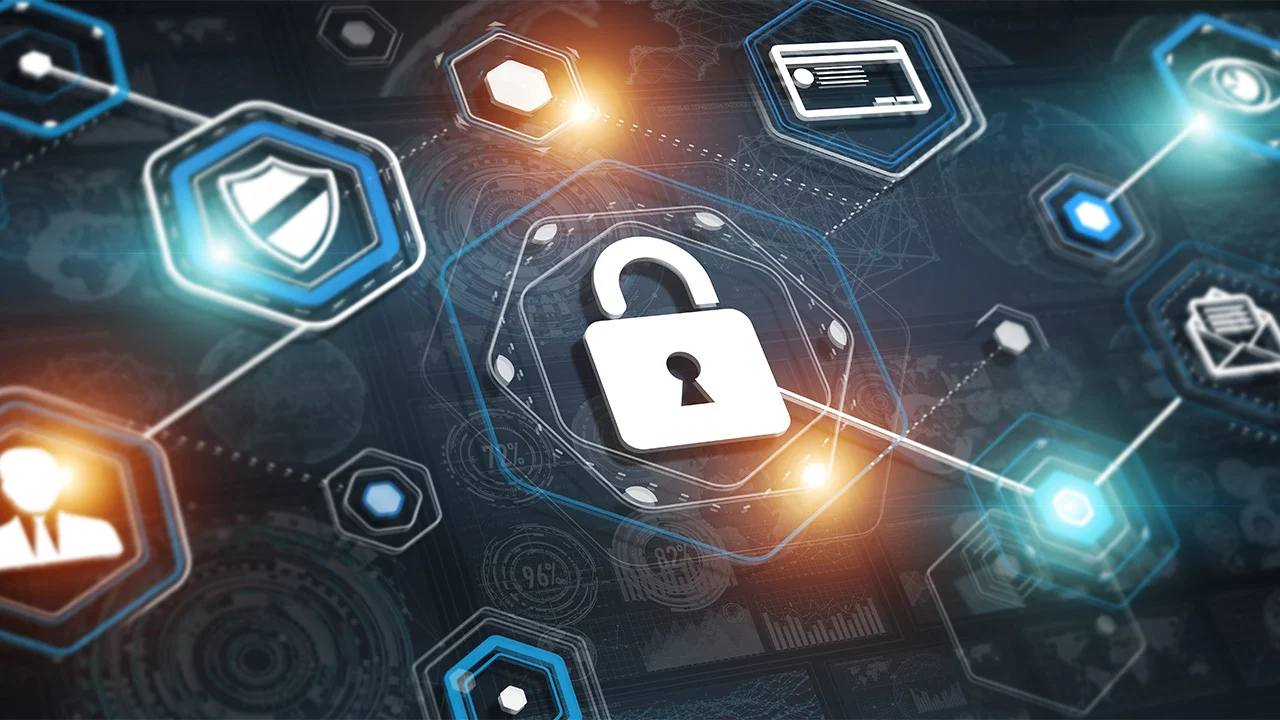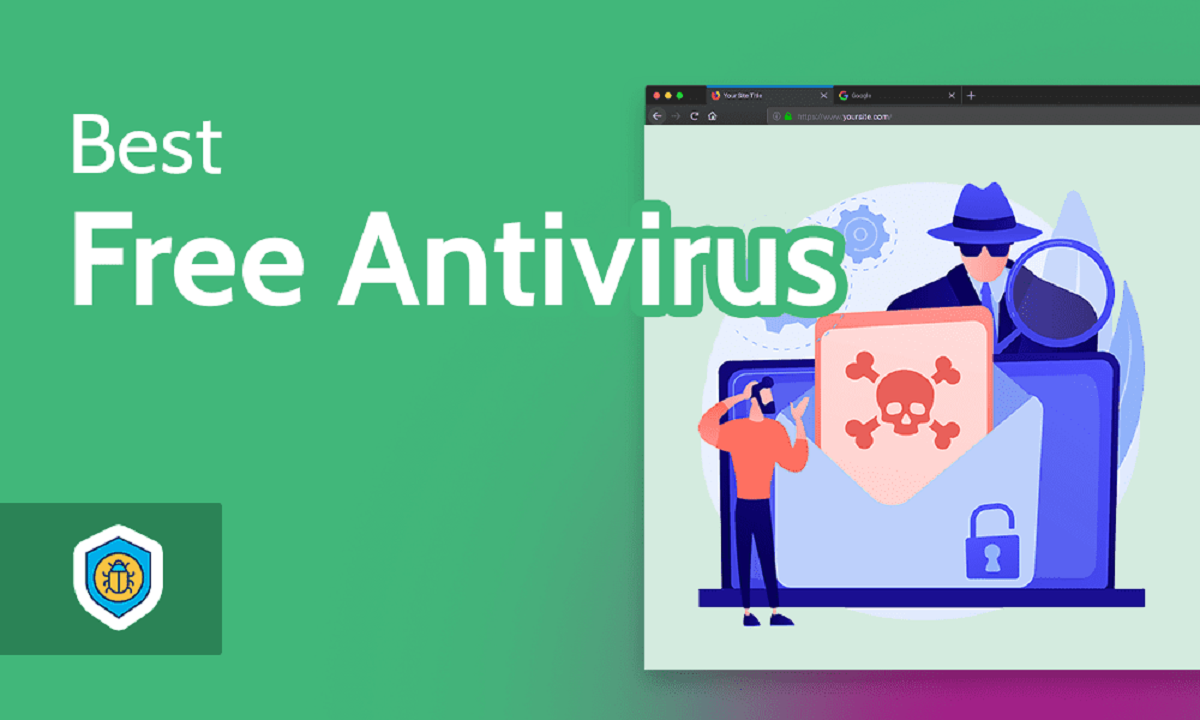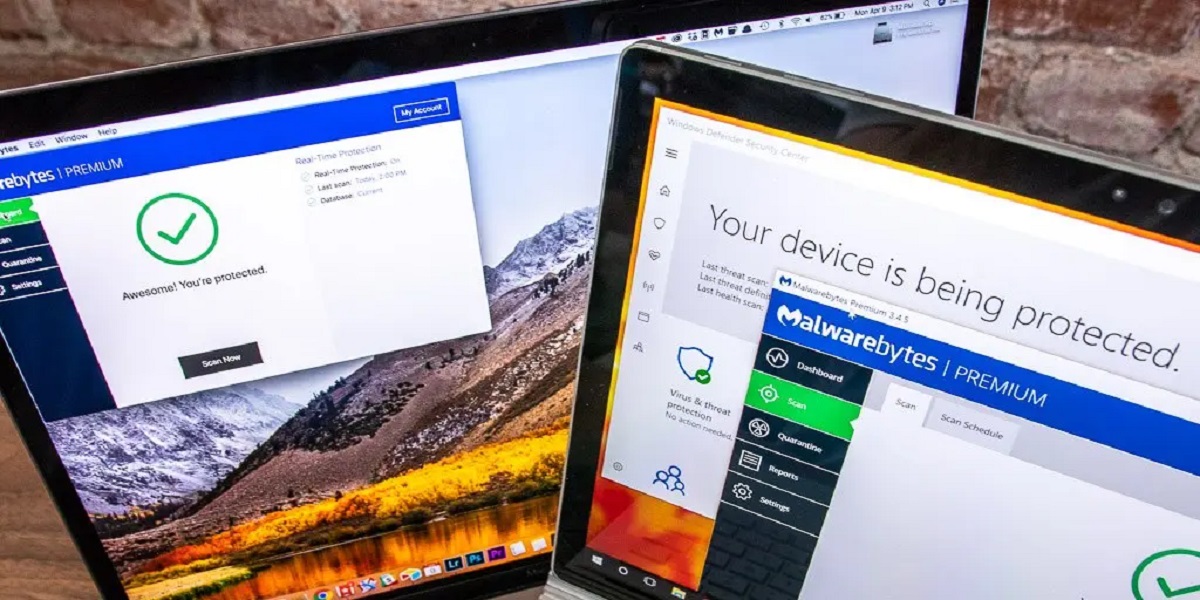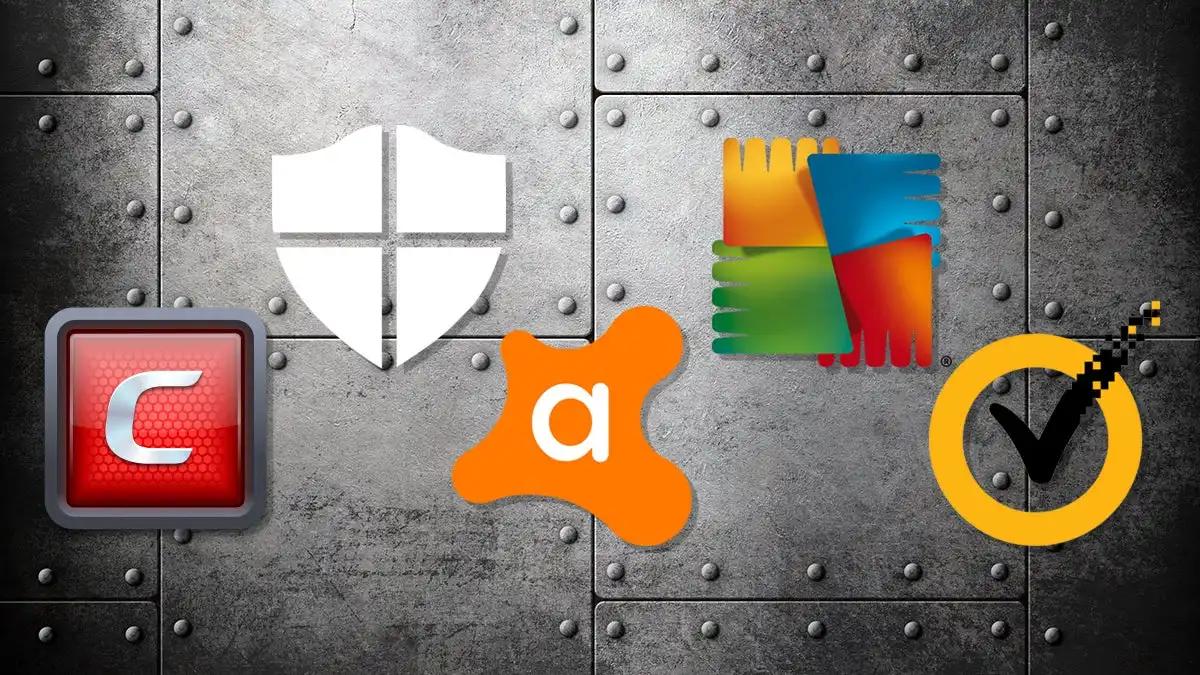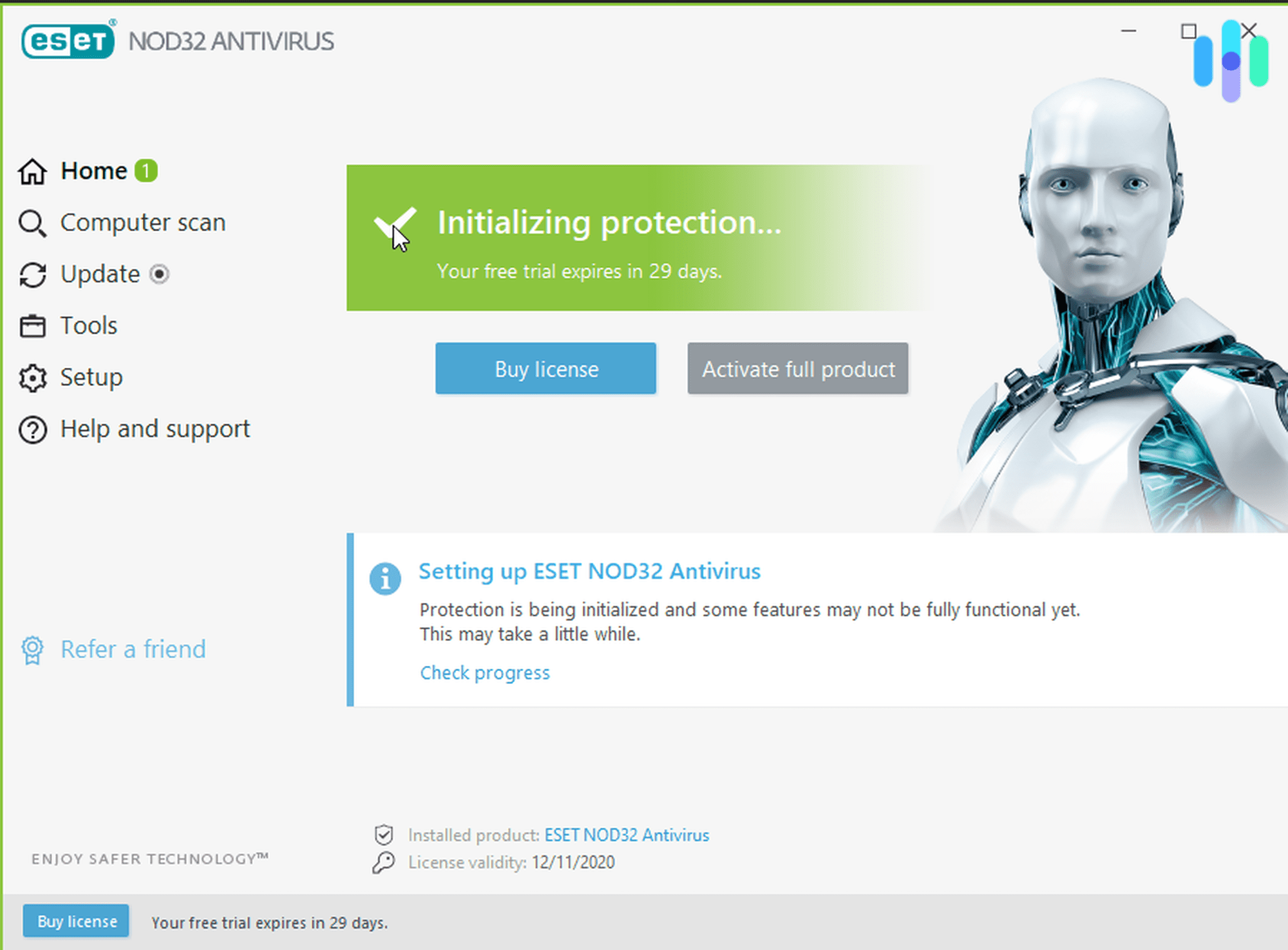Introduction
Welcome to the world of cybersecurity! In today’s digital age, where online threats lurk around every corner, it has become more important than ever to protect our devices and personal information from malicious attacks. This is where antivirus software comes into play.
Antivirus software is a vital tool in the fight against malware, viruses, and other cyber threats. It acts as a shield, safeguarding your computer, smartphone, or tablet from malicious software that could compromise your privacy and security. But what exactly does antivirus software do, and why is it necessary? Let’s delve deeper to understand its significance.
At its core, antivirus software is designed to detect, prevent, and remove malicious software, commonly known as malware, from your system. Malware can come in various forms, such as viruses, worms, Trojans, ransomware, spyware, and adware. These malicious programs can wreak havoc on your device, stealing sensitive information, causing system crashes, and even taking control of your computer.
So, why should you invest in antivirus software? The answer is simple: protection. With the rapid proliferation of cyber threats, having a reliable antivirus solution is crucial for keeping your personal data, finances, and privacy secure. By using antivirus software, you can protect yourself not only from known threats but also from emerging malware that may attempt to exploit vulnerabilities in your devices.
Now that we understand why antivirus software is essential, let’s take a closer look at how it works. Antivirus programs utilize a combination of techniques, such as signature-based scanning, behavior analysis, and heuristics, to detect and neutralize potential threats. These tools constantly monitor your system, scanning files, emails, downloads, and other activities to identify and eliminate any suspicious or malicious content.
While antivirus software is a powerful defense mechanism, it is worth noting that it is not infallible. Hackers and cybercriminals are constantly evolving their techniques, creating sophisticated malware that can bypass traditional antivirus solutions. Therefore, it is crucial to stay vigilant, keep your software up to date, and regularly scan your system for any potential threats.
In the following sections, we will explore the various features of antivirus software, the different types of scans it can perform, how it detects and removes malware, as well as the limitations and challenges that come with relying solely on antivirus protection. We will also provide tips on selecting the right antivirus software for your specific needs and preferences. So, let’s dive in and equip ourselves with the knowledge needed to safeguard our digital lives!
What is Antivirus Software?
Antivirus software, also known as antivirus or anti-malware software, is a type of software designed to protect your computer, smartphone, or other devices from malicious software. Its primary function is to detect, block, and remove harmful programs that can compromise your system’s security.
The main goal of antivirus software is to prevent malware infections and protect your sensitive data from being accessed or stolen. Malware can include viruses, worms, Trojans, ransomware, spyware, or adware, among others. These malicious programs can be introduced into your device through various means, such as downloading infected files, visiting compromised websites, or opening malicious email attachments.
When you install antivirus software on your device, it acts as a guard, constantly monitoring your system for any suspicious activity. It scans files, programs, and incoming data to identify any known or potential threats. If it detects any malicious code or behavior, the antivirus software will take action to neutralize the threat, such as quarantining or deleting the infected files.
Antivirus software typically works by using three main methods: signature-based scanning, behavior monitoring, and heuristics. Signature-based scanning involves comparing files against a database of known malware signatures. If a file matches a signature in the database, it is flagged as malicious. Behavior monitoring, on the other hand, looks for suspicious patterns of behavior that may indicate the presence of malware. This can include activities such as unauthorized access attempts, changes to system files, or unusual network communication. Heuristics is a technique that analyzes the code and behavior of files to identify potentially malicious characteristics even if they don’t match known malware signatures.
In addition to scanning and removing malware, antivirus software often offers other features to enhance your protection. These can include real-time scanning, which continuously monitors your system for any signs of malware, as well as firewall protection, spam filtering, and web browsing protection. Some antivirus software also provides additional security measures, such as vulnerability scanning, which helps identify and fix potential weaknesses in your operating system or applications.
It is important to note that antivirus software is not a foolproof solution. As malware becomes more sophisticated, new threats can emerge that may go undetected by antivirus programs. Therefore, it is crucial to keep your antivirus software up to date and combine it with other security practices, such as regularly updating your operating system and using strong, unique passwords.
In the next sections, we will explore in more detail how antivirus software works, the common features it offers, different types of scans, and how it detects and removes malware. We will also discuss the limitations and challenges of relying solely on antivirus protection and provide guidance on selecting the right antivirus software for your needs. Let’s continue our journey into the world of cybersecurity!
Why Do You Need Antivirus Software?
In today’s interconnected world, where almost every aspect of our lives is linked to the internet, the need for antivirus software is more critical than ever. Here are several reasons why having antivirus software is essential for protecting your devices and personal information.
1. Protection against malware: The primary purpose of antivirus software is to safeguard your devices from malware. Malicious software can infect your computer or mobile device through various means, such as downloading infected files, visiting compromised websites, or opening malicious email attachments. Antivirus software acts as a defensive shield, scanning for and eliminating malware to prevent it from causing damage to your system.
2. Safeguarding your personal and financial information: Cybercriminals are constantly looking for opportunities to steal sensitive information, such as bank account details, credit card numbers, and social security numbers. Antivirus software helps protect your personal and financial data by detecting and blocking attempts to access or steal this information. It provides an additional layer of defense against identity theft and financial fraud.
3. Preventing system crashes and slowdowns: Malware can cause your system to crash, freeze, or become slow and unresponsive. By using antivirus software, you can detect and remove malware that may be negatively impacting your device’s performance. Regular scans and real-time protection can help ensure that your system runs smoothly and efficiently.
4. Protection from ransomware: Ransomware is a particularly malicious type of malware that encrypts your files and demands a ransom payment in exchange for their release. It can be devastating if your important documents, photos, or other valuable data are held hostage. Antivirus software can help detect and block ransomware attacks, preventing your files from being encrypted and potentially saving you from the loss of important data or the need to pay a ransom.
5. Safe internet browsing: Many antivirus software solutions offer web browsing protection, which helps secure your online activities. It can warn you about potentially dangerous websites, block malicious ads and pop-ups, and provide secure browsing environments for conducting online transactions. With antivirus software, you can have peace of mind while navigating the vast and sometimes treacherous online landscape.
6. Protection for your family: If you have children or other family members who use the internet, antivirus software can help safeguard their online experiences. Parental control features, often included in antivirus software suites, allow you to filter and block inappropriate content, monitor their internet use, and set time limits for device usage. These features provide an added layer of protection and oversight for your loved ones.
By utilizing antivirus software, you are actively taking steps to protect your devices, personal information, and digital activities. While antivirus software is not foolproof and should not be relied upon as the sole line of defense, it serves as a crucial foundation for a comprehensive cybersecurity strategy. In the following sections, we will explore how antivirus software works, its common features, the different types of scans it performs, and how it detects and removes malware. Let’s delve deeper into the world of antivirus protection!
How Does Antivirus Software Work?
Antivirus software is equipped with various technologies and techniques to detect and neutralize malicious software. Understanding how antivirus software works can provide valuable insights into its effectiveness in protecting your devices. Here’s a breakdown of the key components and processes involved:
1. Signature-based scanning: One of the primary methods used by antivirus software to identify known malware is through signature-based scanning. This involves comparing files on your device against a database of known malware signatures. If a file matches a signature in the database, it is flagged as malicious. Antivirus software regularly updates its signature database to include newly discovered threats.
2. Behavior monitoring: Antivirus software also employs behavior monitoring to identify potential threats. It looks for suspicious patterns of behavior that may indicate the presence of malware. This can include activities such as unauthorized access attempts, changes to system files, or unusual network communication. By monitoring behavior, antivirus software can detect and intervene before significant damage occurs.
3. Heuristics: In addition to signature-based scanning and behavior monitoring, antivirus software utilizes heuristics. This technique involves analyzing the code and behavior of files to identify potentially malicious characteristics even if they do not match known malware signatures. Heuristics allows antivirus software to detect and block emerging threats that have yet to be added to the signature database.
4. Real-time protection: Many antivirus programs offer real-time protection, also known as on-access scanning. This means that files are scanned for malware as soon as they are accessed, downloaded, or opened. Real-time protection ensures quick detection and immediate action to prevent malware from infecting your system.
5. Background scans: Antivirus software often performs regular background scans to check for malware that may have gone unnoticed during real-time protection. These scans run in the background, using system resources when your device is idle. They help identify and eliminate any malicious software that may have slipped through the initial defenses.
6. Quarantine and removal: When antivirus software detects malware, it typically quarantines the infected file. Quarantine is a process that isolates the file, preventing it from causing further harm. The antivirus software can then either remove the infected file entirely or attempt to clean it by removing the malicious code while leaving the original file intact.
7. Additional security features: Antivirus software often includes additional security features to enhance protection. These can include firewall protection, spam filtering, web browsing protection, and vulnerability scanning. These features work together to provide a comprehensive defense against various types of threats.
It is important to note that while antivirus software plays a crucial role in protecting your devices, it is not infallible. Hackers and cybercriminals are continuously devising new methods to evade detection. Therefore, it is vital to keep your antivirus software up to date by regularly installing updates and patches.
In the next sections, we will explore the common features offered by antivirus software, the different types of scans it can perform, and how it detects and removes malware. We will also discuss the potential limitations and challenges of relying solely on antivirus protection and provide guidance on selecting the right antivirus software for your specific needs. Let’s continue our exploration into the world of antivirus software and cybersecurity!
Common Features of Antivirus Software
Antivirus software comes with a range of features that enhance its ability to protect your devices from malware and other cyber threats. These features work together to provide a comprehensive defense against malicious software. Let’s explore some of the most common features found in antivirus software:
1. Real-time scanning: Real-time scanning, also known as on-access scanning, is a crucial feature offered by antivirus software. It constantly monitors your system, scanning files, programs, and incoming data for any signs of malware. Real-time scanning helps detect and block threats as soon as they are accessed or downloaded, providing immediate protection.
2. Scheduled scans: Most antivirus software allows you to schedule regular scans of your device. With scheduled scans, you can set a specific time for the antivirus software to scan your device thoroughly. This ensures that your system is regularly checked for any hidden malware that may have evaded real-time scanning.
3. Malware detection and removal: The primary function of antivirus software is to detect and remove malware from your system. When malware is detected, the antivirus software quarantines the infected files, preventing them from causing further damage. Depending on the severity of the infection, the antivirus software may either delete or attempt to clean the infected files to remove the malicious code.
4. Web browsing protection: Many antivirus software solutions offer web browsing protection to safeguard your online activities. This feature provides protection against malicious websites, blocking access to potentially harmful sites that could infect your device with malware. Web browsing protection also helps block malicious ads, pop-ups, and phishing attempts that may trick you into divulging sensitive information.
5. Email scanning: Email is a common vector for malware distribution. Antivirus software often includes email scanning capabilities, which scan incoming and outgoing emails for any potential threats. This feature helps protect you from email-borne malware, such as attachments or links that may lead to the installation of malicious software on your system.
6. Firewall protection: Some antivirus software includes a built-in firewall, which acts as a barrier between your device and the internet. A firewall monitors network traffic and blocks unauthorized access attempts, protecting your device from external threats. It helps prevent unauthorized connections to your system and adds an extra layer of security to your network.
7. Vulnerability scanning: Vulnerability scanning is a feature offered by certain antivirus software that helps identify potential weaknesses in your operating system or applications. It scans your system for outdated software, missing security patches, and other vulnerabilities that could be exploited by cybercriminals. By detecting these vulnerabilities, antivirus software allows you to take necessary steps to patch and secure your system.
8. Parental controls: Many antivirus software suites include parental control features, allowing you to protect your family members, especially children, online. Through parental control settings, you can filter and block inappropriate content, set time limits for device usage, monitor internet activities, and ensure a safer online environment for your loved ones.
These are just a few of the common features found in antivirus software. It is worth noting that different antivirus products may offer additional features or vary in their implementation. When selecting an antivirus software, consider your specific needs, the level of protection required, and any additional features that may be beneficial.
In the next sections, we will delve into the different types of scans performed by antivirus software, how it detects and removes malware, the potential limitations and challenges of relying solely on antivirus protection, and tips for choosing the right antivirus software for your needs. Let’s continue our exploration of antivirus software and its role in cybersecurity!
Types of Antivirus Scans
Antivirus software offers various types of scans to thoroughly examine your system and detect any potential threats. These scans help identify and remove malware, ensuring the security of your devices. Let’s explore some of the common types of antivirus scans:
1. Full system scan: A full system scan is a comprehensive scan that examines all files, folders, and programs on your device. It thoroughly checks every nook and cranny of your system, including hidden and system files, to identify any traces of malware. Full system scans are typically thorough but can be time-consuming, especially if you have a large amount of data on your device.
2. Quick scan: As the name suggests, a quick scan is a faster alternative to a full system scan. It targets the most commonly infected areas of your system, such as system files, running processes, and commonly used folders. Quick scans are useful for regular checks to ensure that your system is free from any immediate threats. They are often completed in a matter of minutes.
3. Custom scan: A custom scan allows you to select specific files, folders, or drives to scan. This type of scan gives you more control and flexibility in determining which areas of your system you want to examine for potential threats. Custom scans can be useful when you suspect a particular file or location may be compromised.
4. Removable media scan: Removable media scans focus specifically on external devices, such as USB drives, external hard drives, or SD cards. These devices can be potential carriers of malware, especially if they have been connected to other compromised systems. The scan examines the files and contents of the removable media to ensure they are free from any malicious software.
5. Boot-time scan: A boot-time scan takes place during the boot-up process of your device, before the operating system fully loads. It scans critical system files, startup programs, and other areas that are typically inaccessible during regular system operation. Since boot-time scans occur at a low-level stage, they can effectively detect and remove persistent and hard-to-detect malware.
6. Network scan: Some antivirus software offers network scanning capabilities. This type of scan examines your network for any vulnerabilities or potential threats. It checks for open ports, weak security settings, and any suspicious activity that may indicate a compromised network device. Network scans help ensure the overall security of your network and protect against threats that may enter through network connections.
These are the main types of scans commonly available in antivirus software. The frequency and combination of scans may vary depending on your antivirus software and personal preferences. It is recommended to perform regular scans to maintain the security of your devices and ensure that no malware goes undetected.
In the next sections, we will explore how antivirus software detects and removes malware, the potential limitations and challenges of relying solely on antivirus protection, and provide guidance on selecting the right antivirus software for your specific needs. Let’s continue our journey into the world of antivirus software and cybersecurity!
Real-Time Protection and Background Scans
Antivirus software utilizes various techniques to provide continuous protection against malware, including real-time protection and background scans. These features work together to detect and neutralize threats, ensuring the ongoing security of your devices. Let’s take a closer look at how real-time protection and background scans contribute to the effectiveness of antivirus software:
Real-Time Protection: Real-time protection, also known as on-access scanning, is a crucial feature offered by many antivirus software solutions. It constantly monitors your system, scanning files, programs, and network traffic in real-time as they are accessed, downloaded, or executed. Real-time protection ensures immediate detection and prevention of malware from infecting your system. By actively scanning for threats in real-time, antivirus software can quickly identify and neutralize potential risks before they cause any harm.
Background Scans: In addition to real-time protection, antivirus software often performs background scans that run automatically when your device is idle. These scans take advantage of periods when your device is not actively in use to conduct more thorough examinations of files and system areas. Background scans help identify and eliminate any dormant or hidden malware that may have evaded detection during real-time protection. By scanning files, folders, and drives when your device is idle, background scans proactively mitigate the risk of malware spreading undetected.
The combination of real-time protection and background scans ensures comprehensive protection against malware threats. Real-time protection offers immediate defense, scanning files as you access or download them, while background scans provide deeper, more complete scans during idle times. Together, these features work to continuously monitor and protect your device from malicious software.
It’s important to note that the impact on system resources may vary depending on the configuration of real-time protection and background scans. While real-time protection is essential for immediate threat detection and prevention, some users may choose to adjust the frequency or intensity of background scans to optimize the balance between system performance and security. Most antivirus software allows you to customize scheduling options or exclusions to better suit your needs.
Remember that regular updates of the antivirus software are crucial to keep up with the constant evolution of malware and to benefit from the latest security enhancements. It’s also recommended to perform manual scans periodically to complement real-time protection and background scans, ensuring all areas of your device are thoroughly checked for potential threats.
In the next sections, we will explore how antivirus software detects and removes malware, the potential limitations and challenges of relying solely on antivirus protection, and provide guidance on selecting the right antivirus software for your specific needs. Let’s continue our journey into the world of antivirus software and cybersecurity!
How Antivirus Software Detects and Removes Malware
Antivirus software employs a variety of techniques to detect and remove malware, protecting your devices from potential threats. Understanding how antivirus software detects and fights against malicious software can provide insights into its effectiveness. Let’s explore the common methods used by antivirus software for detecting and removing malware:
1. Signature-based scanning: One of the primary methods employed by antivirus software is signature-based scanning. Antivirus software maintains a database of known malware signatures. During a scan, the software compares files, programs, and data on your device against these signatures. If a file matches a known malware signature, it is flagged as malicious and subsequently removed or quarantined.
2. Behavior monitoring: Antivirus software utilizes behavior monitoring to identify suspicious activities that may indicate the presence of malware. The software observes the behavior of programs, files, and processes in real-time, looking for unusual or malicious actions. Behavior monitoring can detect malicious behaviors such as unauthorized access attempts, modifications to critical system files, or abnormal network communication.
3. Heuristics: Antivirus software also employs heuristics, which involves analyzing the code and behavior of files to detect previously unidentified or emerging threats. Heuristics allows antivirus software to identify potentially malicious characteristics even if they do not match known malware signatures. This proactive approach helps detect new strains of malware that have not been previously identified.
4. Sandboxing: Some antivirus software uses sandboxing technology to analyze suspicious files or programs in an isolated and controlled environment. This technique allows the software to observe the behavior of the file without risking the infection of the actual system. By running the file in a sandbox, antivirus software can identify any malicious activities and take appropriate actions to mitigate the threat.
5. Machine learning: Some advanced antivirus software incorporates machine learning algorithms to improve detection capabilities. Machine learning algorithms analyze large amounts of data to identify patterns and make accurate predictions. By training the software using known malware samples, machine learning algorithms can identify new and unknown forms of malware based on their similarities to previously analyzed malicious files or behaviors.
6. Automatic updates: To keep up with the constantly evolving threats, antivirus software relies on automatic updates. These updates include new malware signatures, behavioral indicators, and other security enhancements. Automatic updates ensure that your antivirus software stays up to date with the latest defense mechanisms, enabling it to effectively detect and remove the most recent threats.
When antivirus software detects malware, it takes appropriate actions to neutralize the threat. This can include quarantining the infected file, deleting it if it is deemed malicious, or attempting to clean the file by removing the malicious code while preserving the integrity of the original file. The antivirus software will then notify the user of the actions taken and provide information on the detected malware.
It’s important to note that although antivirus software is a powerful tool, it is not infallible. Hackers continually develop new techniques and zero-day exploits that can bypass traditional detection methods. Therefore, it’s crucial to keep your antivirus software regularly updated and to practice safe browsing habits, such as avoiding suspicious websites, not downloading files from untrusted sources, and being cautious with email attachments.
In the next sections, we will explore the potential limitations and challenges of relying solely on antivirus protection, discuss tips for choosing the right antivirus software for your needs, and delve deeper into the world of cybersecurity. Let’s continue our journey into the realm of antivirus software and digital defense!
Potential Limitations and Challenges of Antivirus Software
While antivirus software is an integral part of your overall cybersecurity strategy, it is essential to understand its potential limitations and challenges. Antivirus software has evolved to combat a wide range of threats but is not a foolproof solution. Here are some of the potential limitations and challenges:
1. Zero-day exploits: Zero-day exploits refer to vulnerabilities or weaknesses in software or systems that have been discovered by hackers but are not yet known to the software developers. This means that antivirus software may not have the necessary signatures or behavioral patterns to detect and block these brand-new threats. Zero-day exploits pose a significant challenge as malware can exploit these vulnerabilities before antivirus software can fully adapt.
2. Advanced and targeted attacks: Sophisticated cyber attacks, often attributed to state-sponsored or highly skilled hackers, can bypass traditional antivirus software. These attacks employ advanced evasion techniques, encryption, and polymorphic malware that can change their code to avoid detection. Antivirus software may struggle to identify and defend against these targeted attacks effectively.
3. False positives and false negatives: Antivirus software occasionally flags legitimate files or programs as malware (false positives). This can be frustrating and can potentially lead to the deletion of important files. On the other hand, false negatives occur when antivirus software fails to detect actual malware. The constant battle between accurately identifying malware and avoiding false positives can pose a challenge for antivirus software.
4. Performance and system impact: Depending on their configuration and intensity, antivirus software scans and background services can consume system resources and impact device performance. While antivirus software developers strive to minimize the resource usage, some users may experience sluggishness or performance issues, especially on older or less powerful devices. Finding the right balance between security and system efficiency can be a challenge.
5. Emerging threats and evolving malware: The cybersecurity landscape is constantly evolving, with new threats and malware variants emerging regularly. Antivirus software relies on timely updates to detect and combat these evolving threats. However, there may be a lag between the discovery of new malware and the release of updated signatures or behavioral patterns. During this window, users may be vulnerable to the latest malware until their antivirus software can catch up.
6. User awareness and safe online practices: Antivirus software is most effective when used in conjunction with user awareness and safe online practices. Users need to exercise caution when downloading files, opening email attachments, or visiting websites to avoid potential malware infections. Relying solely on antivirus software without practicing safe online habits can leave users more susceptible to threats.
Despite these limitations and challenges, antivirus software remains a critical component of a robust cybersecurity strategy. It provides a baseline level of protection against a broad range of threats and ensures that common malware can be detected and removed. To enhance your overall protection, it is recommended to complement antivirus software with additional security measures, such as regular operating system and software updates, strong passwords, and secure browsing habits.
In the next sections, we will provide tips for choosing the right antivirus software for your needs, explore the different factors to consider, and delve deeper into the world of cybersecurity. Let’s continue our journey into the realm of antivirus software and digital defense!
Choosing the Right Antivirus Software for Your Needs
With a multitude of antivirus software options available in the market, selecting the right one for your needs can be a daunting task. Here are some important factors to consider when choosing antivirus software:
1. Security features: Look for antivirus software that provides comprehensive security features to protect your devices. Consider features such as real-time scanning, web browsing protection, email scanning, firewall protection, and vulnerability scanning. Assess your specific security needs and prioritize the features that align with those requirements.
2. Malware detection rates: Evaluate the malware detection rates of different antivirus software. Look for independent test results and reviews from reputable sources to assess the effectiveness of the software in detecting known and emerging threats. High detection rates ensure that the antivirus software is capable of identifying a wide range of malware.
3. System impact: Consider the impact of the antivirus software on your system’s performance. Look for software that strikes a balance between effective protection and minimal resource usage. Pay attention to user reviews and performance benchmarks to determine the software’s impact on system resources and user experience.
4. User interface and usability: The user interface should be intuitive, user-friendly, and easy to navigate. Look for antivirus software that provides a seamless user experience with clear options and settings. A well-designed user interface ensures that you can quickly access and configure the software to meet your specific needs.
5. Updates and support: Regular updates are critical to ensure that your antivirus software stays up to date with the latest malware threats. Look for software that offers timely updates and has a reputation for promptly addressing vulnerabilities. Additionally, consider the availability of customer support, including the options for contacting technical support and resolving any issues that may arise.
6. Compatibility: Ensure that the antivirus software is compatible with your operating system and devices. Check if the software supports the specific version of the operating system you are using, as well as any other devices you want to protect, such as smartphones or tablets.
7. Reputation and reviews: Research the reputation of the antivirus software provider. Look for reviews and feedback from both industry experts and users to assess the software’s reliability, customer satisfaction, and overall performance. Consider the longevity and reputation of the provider in the cybersecurity industry.
8. Pricing and licensing: Consider the pricing structure and licensing options of the antivirus software. Determine whether the software offers a free version or a trial period to assess its capabilities before committing to a paid version. Evaluate the pricing plans and subscription models to ensure they align with your budget and provide the desired level of protection.
By considering these factors, you can make a more informed decision when choosing antivirus software that meets your specific needs. Remember that everyone’s requirements may differ, so prioritize the features that are most important to you and your devices’ security.
In addition to antivirus software, it is essential to practice safe online habits and maintain regular backups of your important data. Antivirus software is most effective when combined with other security measures, such as keeping your operating system and applications up to date, using strong passwords, and being cautious when clicking on links or downloading files from unknown sources.
In the next sections, we will delve deeper into the world of cybersecurity, exploring ways to enhance your digital defense, best practices to secure your devices, and tips for staying safe online. Let’s continue our journey into the realm of antivirus software and digital protection!
Conclusion
Antivirus software plays a crucial role in protecting your devices and personal information from the ever-present threat of malware. By utilizing advanced detection techniques, regular scans, and real-time protection, antivirus software acts as a defense mechanism against various forms of malicious software.
Throughout this article, we have explored the fundamental aspects of antivirus software. We discussed the importance of antivirus software in today’s interconnected world, where cyber threats are prevalent. We learned how antivirus software works, from signature-based scanning and behavior monitoring to heuristics and machine learning algorithms.
We also explored the common features offered by antivirus software, such as real-time protection, scheduled and custom scans, web browsing protection, and email scanning. These features contribute to a holistic defense against malware and help maintain the security of your devices.
It is crucial to understand the potential limitations and challenges of relying solely on antivirus protection. While antivirus software is an essential tool, it is not infallible, and emerging threats, zero-day exploits, and advanced targeted attacks can pose challenges. It’s important to combine antivirus software with safe online practices and additional security measures.
When choosing antivirus software, consider factors such as security features, malware detection rates, system impact, user interface, updates and support, compatibility, reputation, and pricing. By carefully evaluating these factors, you can select the antivirus software that best suits your needs and provides effective protection.
Remember that antivirus software is just one piece of the cybersecurity puzzle. It should be complemented by strong passwords, regular software updates, safe browsing habits, and data backups to create a comprehensive defense against cyber threats.
Stay informed about the latest cybersecurity trends, remain vigilant, and adapt your protective measures accordingly. By staying proactive, practicing good cybersecurity hygiene, and employing the right antivirus software for your needs, you can enhance your digital defense and safeguard your devices and personal information.
Now that you are equipped with a deeper understanding of antivirus software and its role in cybersecurity, go forth and protect your digital world!









